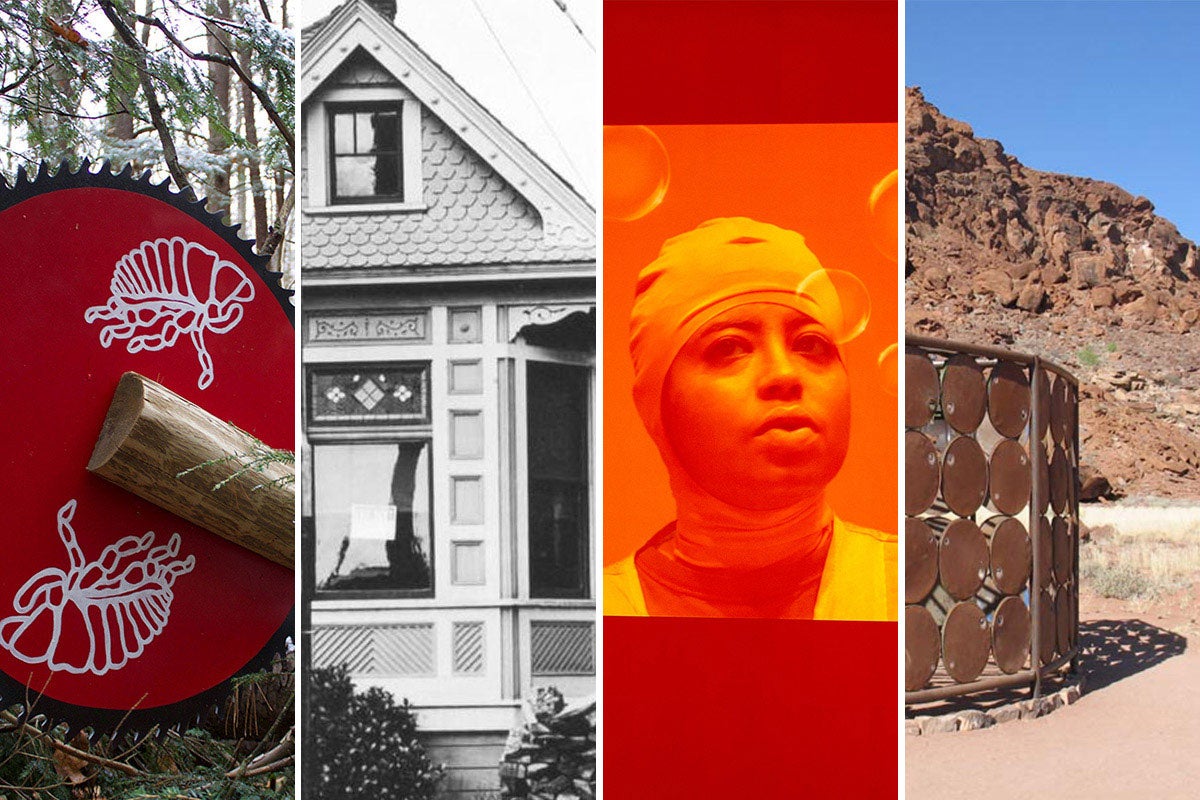 From left to right: 'Double Assault' by David Buckley Borden; the Mayo House in Portland, part of a project by Cleo Davis and Kayin Talton Davis; 'Abra' video by Hiba Ali; and the Twyfelfontein Visitors' Centre designed by Nina Maritz.
From left to right: 'Double Assault' by David Buckley Borden; the Mayo House in Portland, part of a project by Cleo Davis and Kayin Talton Davis; 'Abra' video by Hiba Ali; and the Twyfelfontein Visitors' Centre designed by Nina Maritz.
The College of Design is excited to welcome new and visiting faculty, as well as Design for Spatial Justice Initiative fellows, this fall term.
The Department of the History of Art and Architecture (HAA)
Simone Ciglia
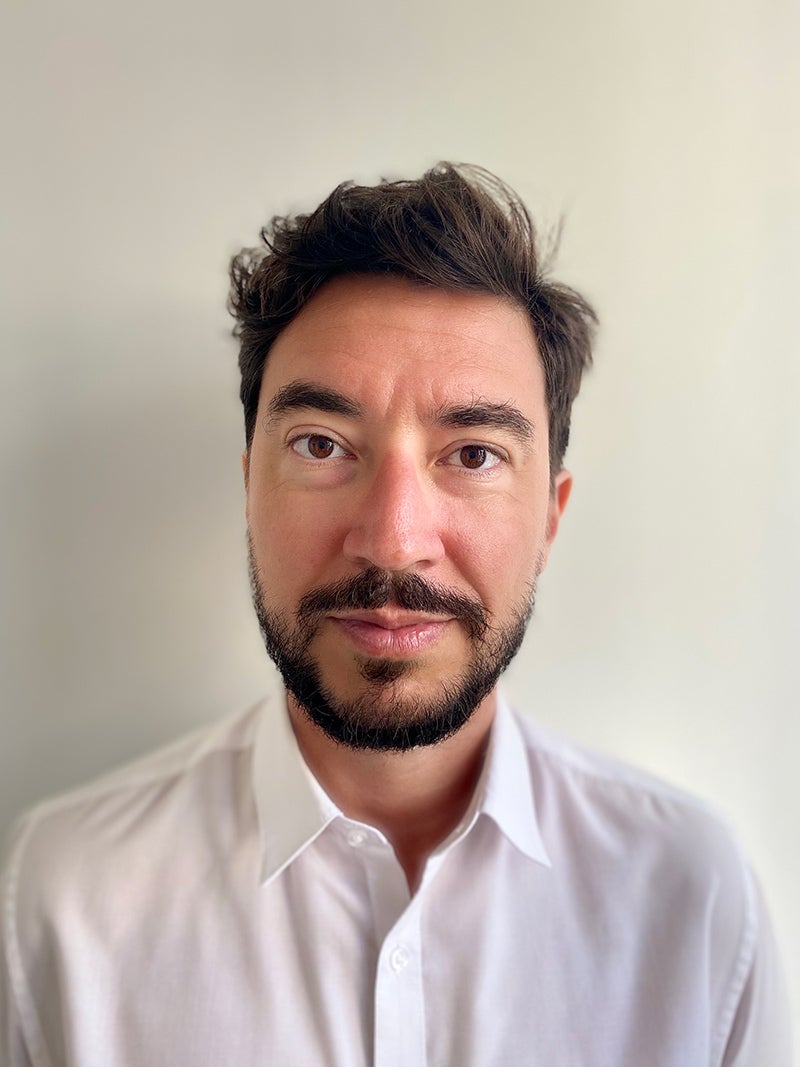 Joining HAA as a pro tem instructor in contemporary art and museology, Simone Ciglia, who is also a freelance curator, is teaching Contemporary Art (ARH 354). Through the lens of exhibition studies, Ciglia and his students will explore a selection of seminal exhibitions from the 1960s through the ’90s, illustrating major movements of the period, including pop art, minimal art, arte povera, conceptual art, land art, neo-expressionism, and relational aesthetics.
Joining HAA as a pro tem instructor in contemporary art and museology, Simone Ciglia, who is also a freelance curator, is teaching Contemporary Art (ARH 354). Through the lens of exhibition studies, Ciglia and his students will explore a selection of seminal exhibitions from the 1960s through the ’90s, illustrating major movements of the period, including pop art, minimal art, arte povera, conceptual art, land art, neo-expressionism, and relational aesthetics.
“I like to work in the interstices of disciplines between research in contemporary art history and curatorial practice,” Ciglia said. “I'm excited to bring my practical experience into the academic conversation and to integrate the haptic dimension of working within museums into my courses."
Ciglia is also a professor at the Academy of Fine Arts Urbino in Italy and an assistant researcher at MAXXI: Museum of XXI Century Arts in Rome. His most recent projects as a curator include La forma della terra. Geografia della ceramica contemporanea in Italia at the Fondazione Malvina Menegaz and Mario Airò. Modellare l'acqua at Bazament Art Space.
Mariachiara Gasparini
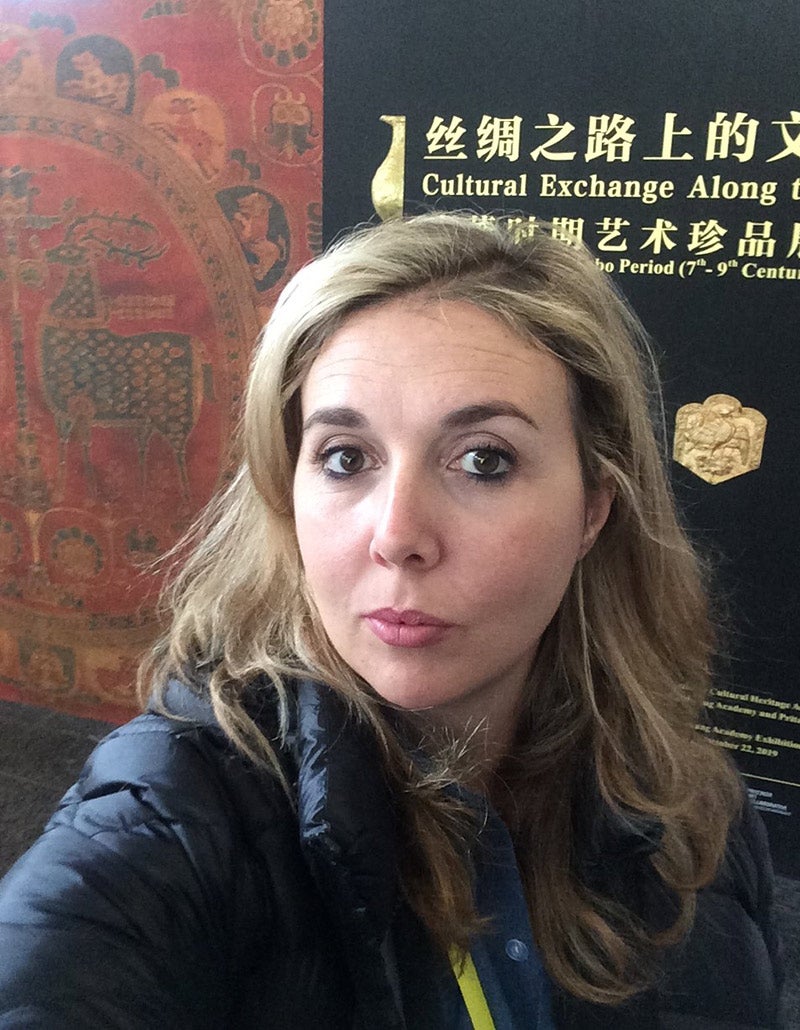 Assistant Professor Mariachiara Gasparini is teaching a course on Chinese art and architecture this fall. In the following terms, Gasparini will lead a seminar on the arts of the Silk Road and teach an experimental course titled “Through the Looking Glass: Chinese Textiles and Fashion.”
Assistant Professor Mariachiara Gasparini is teaching a course on Chinese art and architecture this fall. In the following terms, Gasparini will lead a seminar on the arts of the Silk Road and teach an experimental course titled “Through the Looking Glass: Chinese Textiles and Fashion.”
Her research focuses on the historical, theoretical, and visual investigation of the history of Eurasian art and culture.
“While studying the meanings and functions of important artworks throughout history, my course will also focus on the exchange of visual and material arts and ideas and religions between China and the ‘outside’ world,” said Gasparini. “Textile fragments and costumes from collections worldwide, including late imperial Chinese robes in the Jordan Schnitzer Museum, will be historically and visually recontextualized and technically analyzed.”
Before coming to the College of Design, Gasparini taught Asian art history courses at the University of California Riverside, San Jose State University, San Francisco State University, and Santa Clara University.
Matthew Mullane
 Joining HAA as a visiting assistant professor for the 2020–21 academic year, Matthew Mullane is teaching introductory courses on world architecture history (ARH 315) and upper-level courses on the architecture of the Japanese empire as well as contemporary East Asian architecture (ARH 4/585).
Joining HAA as a visiting assistant professor for the 2020–21 academic year, Matthew Mullane is teaching introductory courses on world architecture history (ARH 315) and upper-level courses on the architecture of the Japanese empire as well as contemporary East Asian architecture (ARH 4/585).
“I’m excited to engage with the architects, designers, and artists at the College of Design and use architecture history as a platform to better understand the complexities of our current spatial predicament through the lessons of the past,” Mullane said.
Mullane specializes in architecture history and historiography from the 19th and 20th centuries with an emphasis on the emergence of “world” architecture history in Japan and Europe.
He received his PhD in architecture history and theory from Princeton University in 2019 and was a postdoctoral fellow at the Edwin O. Reischauer Institute of Japanese Studies at Harvard University from 2019 to 2020.
School of Architecture & Environment (SAE)
Logman Arja
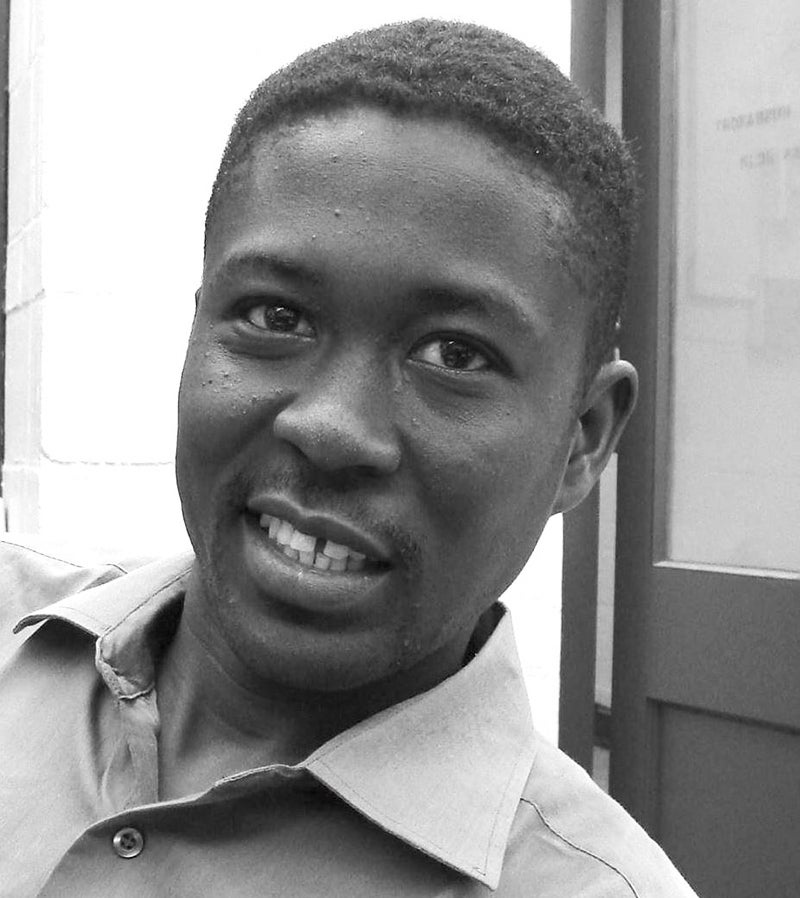 A Design for Spatial Justice fellow, Logman Arja is teaching an undergraduate architecture studio (ARCH 383). Arja’s interdisciplinary research spans sustainability, ruralism, and rural architecture.
A Design for Spatial Justice fellow, Logman Arja is teaching an undergraduate architecture studio (ARCH 383). Arja’s interdisciplinary research spans sustainability, ruralism, and rural architecture.
“I am very much interested in instrumentalizing architecture and technology to help transform local communities and impoverished societies, especially in developing countries,” Arja said.
He is currently leading efforts to adopt the technology of additive manufacturing in sub-Saharan Africa to give a long-term perspective for the development of sustainable and replicable housing solutions and rural micro-infrastructures. Arja comes to the College Design from the University of California, Berkeley, where he taught graduate and undergraduate courses on ruralism and rural architecture. Arja will be working with a student research assistant on his book manuscript in the fall term.
David Buckley Borden
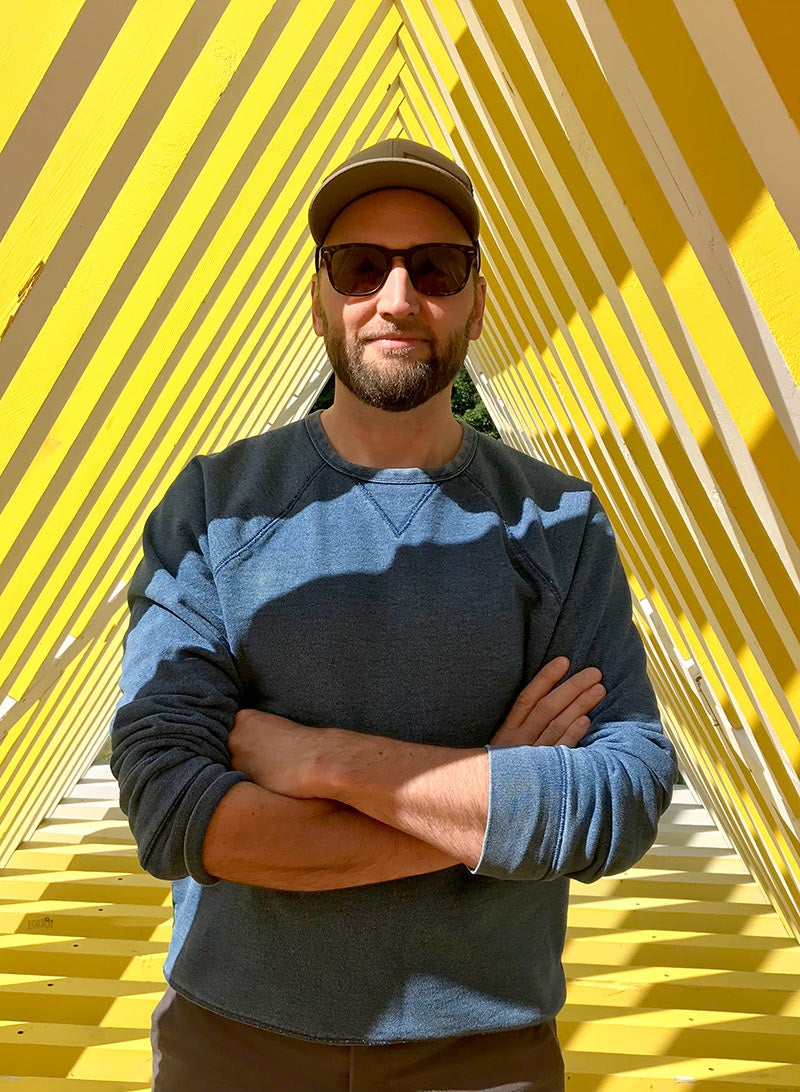 Interdisciplinary artist and designer David Buckley Borden comes to the Department of Landscape Architecture as a visiting professor for the 2020–21 academic year. Borden is teaching studios and environmental communication courses as well as leading a design-ecology initiative between the department and the HJ Andrews Experimental Forest near Blue River, Oregon.
Interdisciplinary artist and designer David Buckley Borden comes to the Department of Landscape Architecture as a visiting professor for the 2020–21 academic year. Borden is teaching studios and environmental communication courses as well as leading a design-ecology initiative between the department and the HJ Andrews Experimental Forest near Blue River, Oregon.
“This fall, I hope to have fun by sharing a variety of creative environmental communication approaches with students and making a contribution to the College of Design community through collaborative research-driven art and design,” Borden said.
Through his accessible and humorous art and design, Borden promotes a shared environmental awareness and heightened cultural value of ecology. He was recently a Charles Bullard Fellow in Forest Research at Harvard where he answered the question, “How can art and design foster cultural cohesion around environmental issues and help inform ecology-minded decision making?”
Anne Cunningham
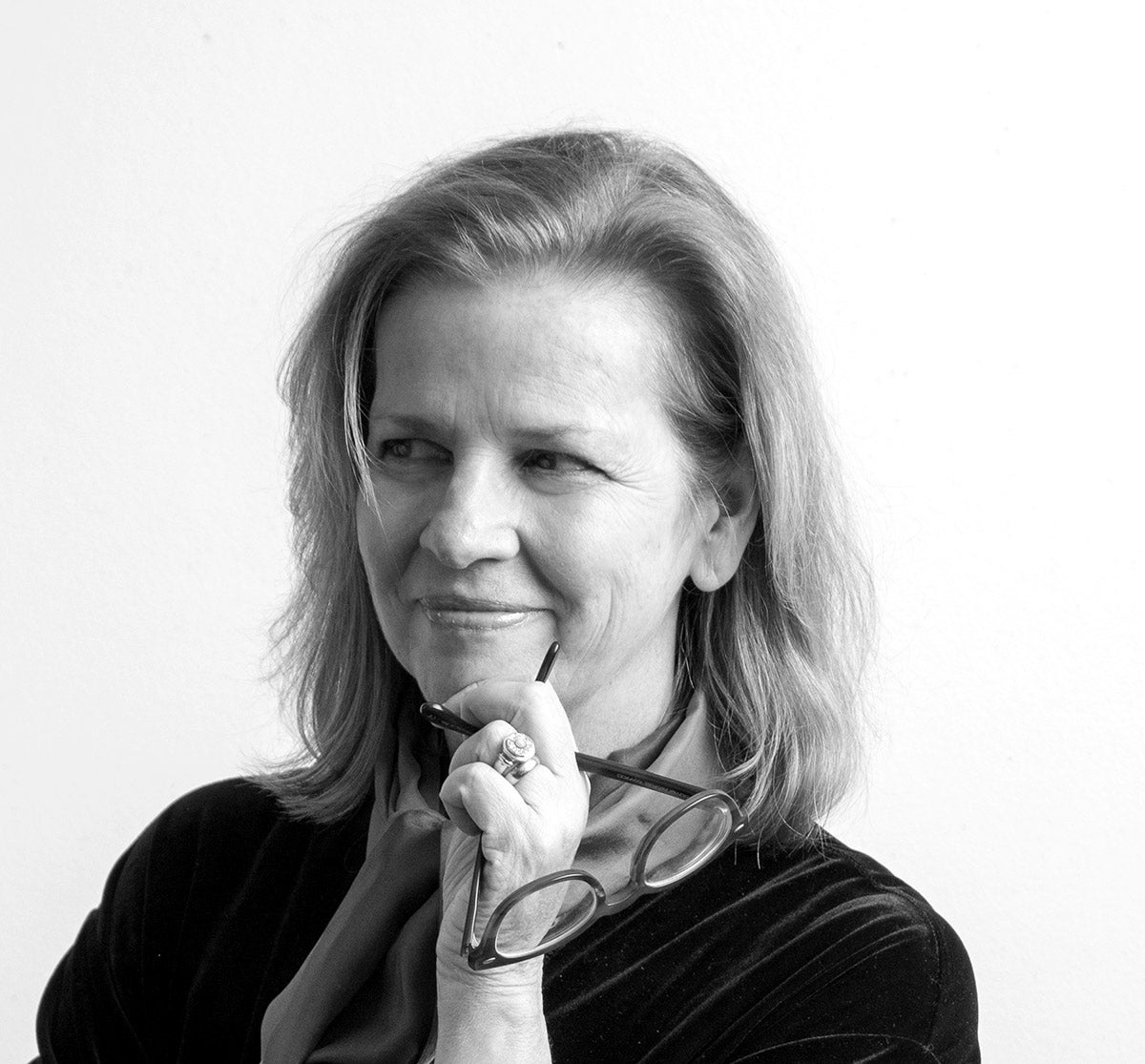 Designer Anne Cunningham joins the Department of Interior Architecture this fall as the Margo Grant Walsh Visiting Professor and is teaching an interior architecture studio.
Designer Anne Cunningham joins the Department of Interior Architecture this fall as the Margo Grant Walsh Visiting Professor and is teaching an interior architecture studio.
“Given this particular moment in time, the power of design is part of an equation in addressing new cultural mandates of the built environment,” said Cunningham. “With that said, it is an exciting time to be part of the College of Design’s highly collaborative, interdisciplinary design community.”
“I hope to inspire and challenge the students to develop strategies that explore new, rarely considered, human-centered spatial solutions,” she added.
Cunningham, who is based in Seattle, has more than 30 years of experience in the design field. She was a design principal at NBBJ Architects for more than 27 years and, in 2019, left to start her own consulting practice—Tarpaulin Studio—where she currently works on civic and mixed-use projects in the Seattle area. Throughout her career, she has worked on projects for the Bill & Melinda Gates Foundation, Boeing, Microsoft, and Vulcan. During quarantine, Cunningham and her family have been restoring a 1964 Cheoy Lee Lion sloop.
Cleo Davis and Kayin Talton Davis
Portland-based artists and activists Cleo Davis and Kayin Talton Davis join SAE’s Design for Spatial Justice Initiative this fall as visiting professors of practice. They are collaborating with Belluschi Distinguished Visiting Professor and continuing Design for Spatial Justice Fellow Craig L. Wilkins on the terminal studio project (re)BUILDINGCORNERSTONES. The studio partners with residents of the historic Black and African American neighborhood of Albina in Portland to understand, analyze, and propose designs that creatively address decades-long, systemic obstacles.
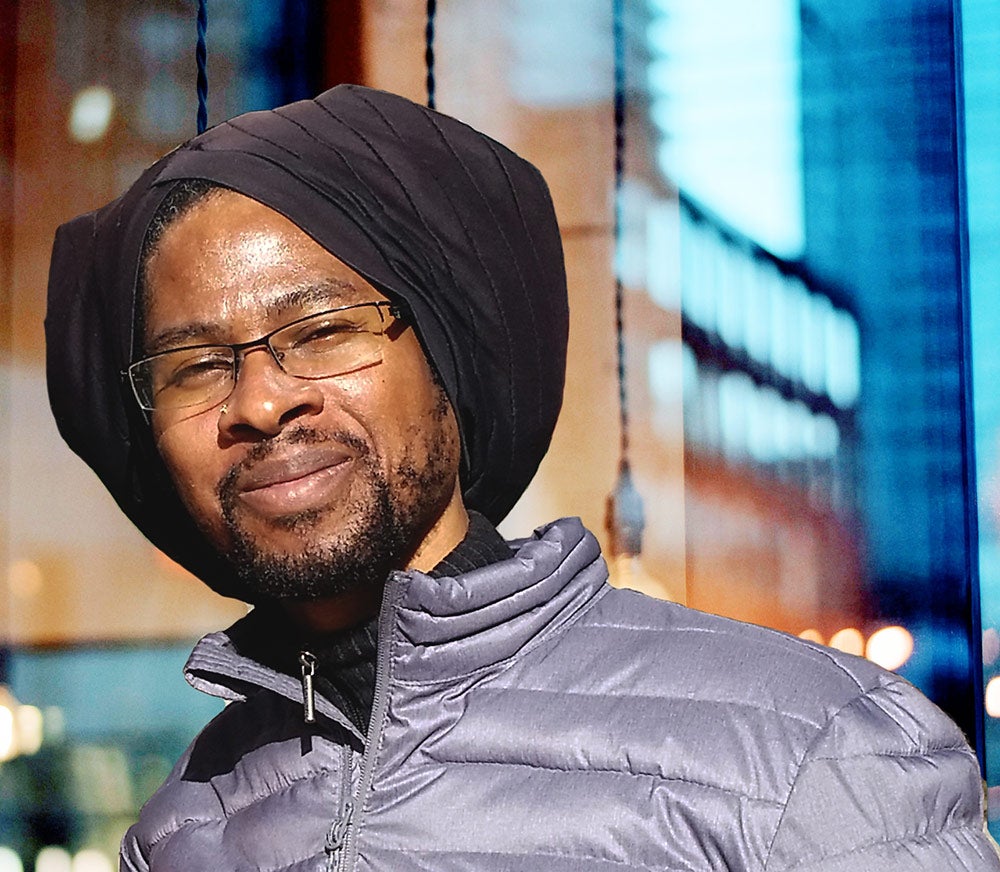 Cleo Davis is a current artist in residence at the City of Portland Archives and co-artist of the Historic Black Williams Art Project and the Alberta Street Black Heritage Markers. In his work, he combines disciplines of cultural and creative arts while utilizing design, historic preservation, economic development, and city policy.
Cleo Davis is a current artist in residence at the City of Portland Archives and co-artist of the Historic Black Williams Art Project and the Alberta Street Black Heritage Markers. In his work, he combines disciplines of cultural and creative arts while utilizing design, historic preservation, economic development, and city policy.
In one of his most recent projects, Davis orchestrated the move of a historic house in Portland to create a Black and Afro-American cornerstone of creative genius that promotes art, research, and imagination.
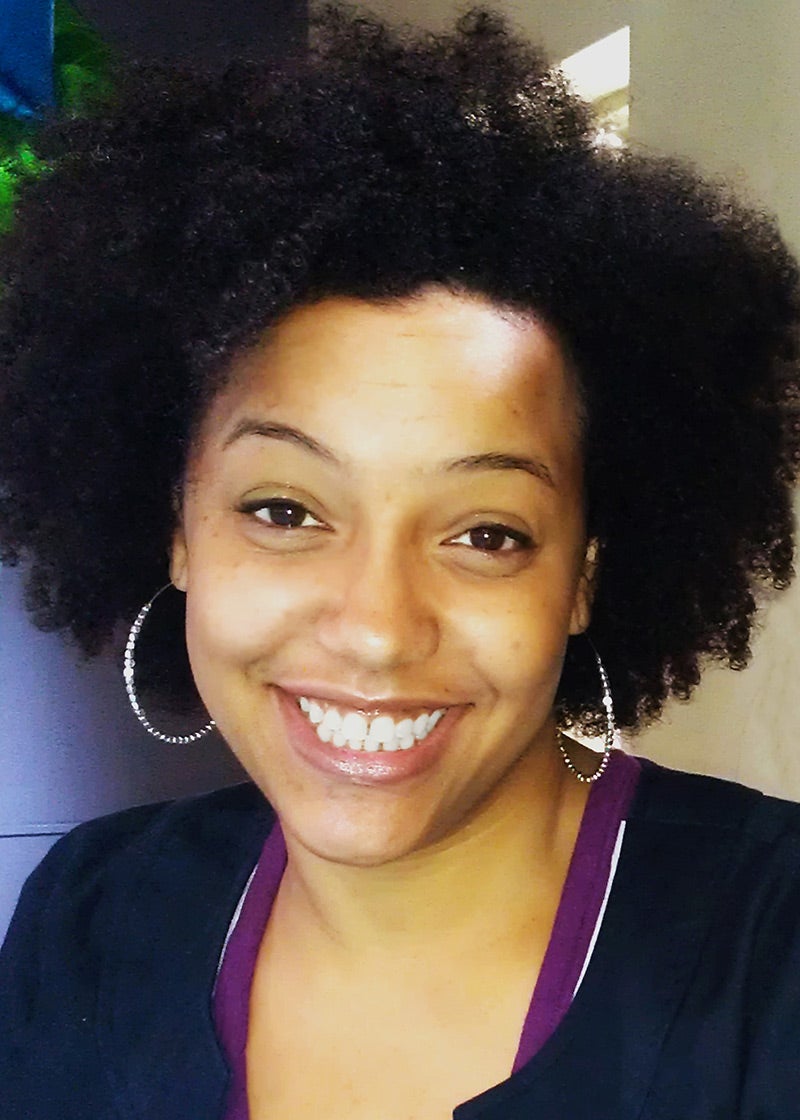 Kayin Talton Davis is a creator and innovator whose work centers on her passion for fusing art grounded in Black heritage and culture with graphic design, mechanical engineering, community building, and education. She is also an artist in residence with the City of Portland Archives and a co-artist of the Historic Black Williams Art Project and the Alberta Street Black Heritage Markers.
Kayin Talton Davis is a creator and innovator whose work centers on her passion for fusing art grounded in Black heritage and culture with graphic design, mechanical engineering, community building, and education. She is also an artist in residence with the City of Portland Archives and a co-artist of the Historic Black Williams Art Project and the Alberta Street Black Heritage Markers.
Her most recent permanent public installation in the Portland Building, “We’ve Been Here,” highlights Black Oregon women in the early 1900s. Talton Davis, who is known for her vibrant color palettes and unique aesthetic, also founded Soapbox Theory, a business that produces stationery, apparel, accessories, and home décor with the mission of “Cultivating Black Joy.”
Nina Maritz
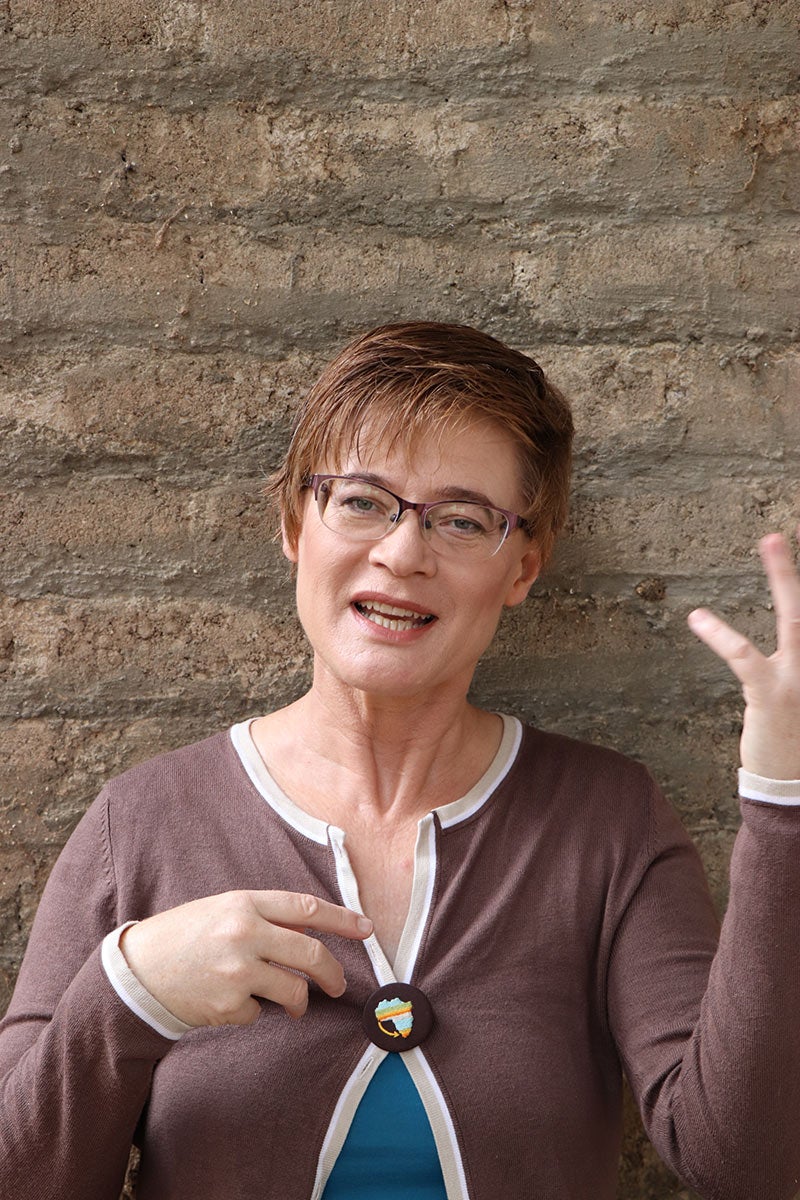 Architect Nina Maritz joins SAE as a Design for Spatial Justice fellow this term and is teaching an architecture seminar on experimental building materials focusing on low-cost, eco-friendly products.
Architect Nina Maritz joins SAE as a Design for Spatial Justice fellow this term and is teaching an architecture seminar on experimental building materials focusing on low-cost, eco-friendly products.
“I’m especially looking forward to the interaction with students in the seminar and to see what emerges from collective brainstorming,” Maritz said. “Students will be required to search for materials in their local environment (not to be bought in a store!) and come up with ideas for how these can be used. I envisage a lot of surprises, fun, and discovery, as well as growth in student confidence when it comes to materials and technology.”
Maritz, a 5th generation Namibian architect, started her own practice in 1998 in Windhoek and has been involved with a wide variety of projects combining environmental sustainability, alternative building methods, and community development. She is best known for the design of the Habitat Research and Development Centre in Katatura and the Twyfelfontein Visitors’ Centre.
Gavin McClelland
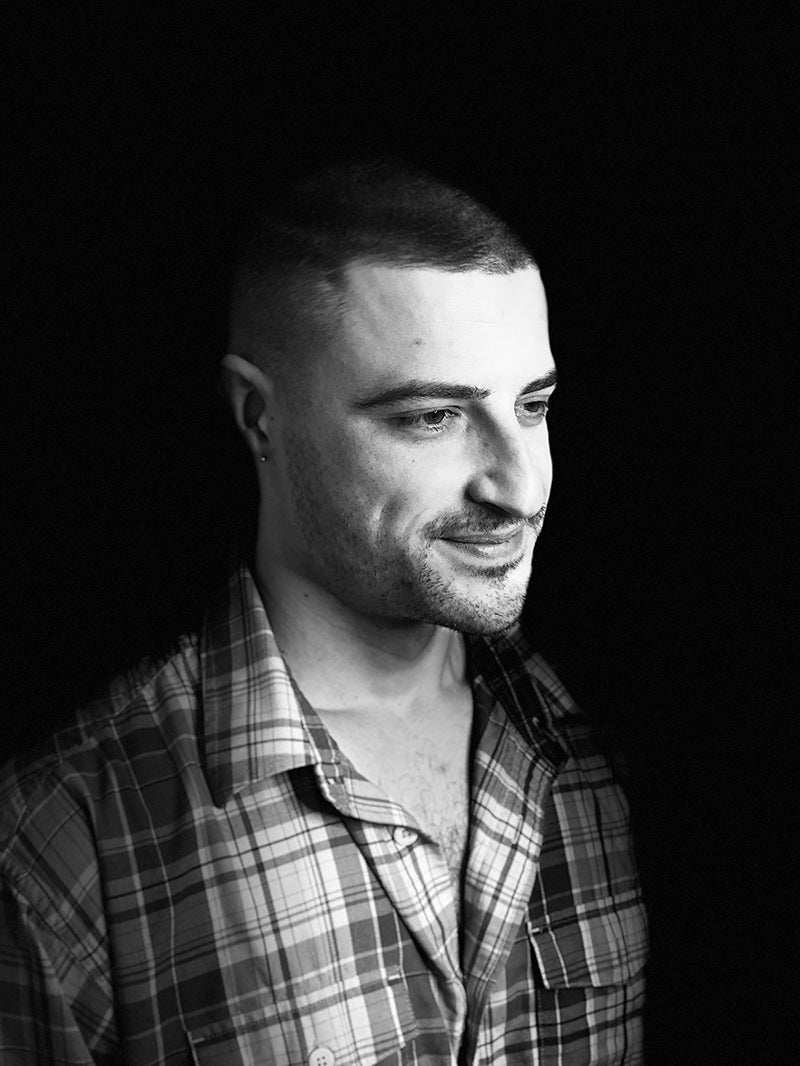 Architectural designer Gavin McClelland joins the Department of Landscape Architecture this fall as a pro tem instructor.
Architectural designer Gavin McClelland joins the Department of Landscape Architecture this fall as a pro tem instructor.
“While at the College of Design, I hope to share my interdisciplinary perspective with the students, including the ways in which urban spaces can be plugged in to natural systems and patterns of movement,” McClelland said. “This fall, I hope to engage the students with the concepts of ‘change over time’ and ‘body in space.’ Through this theory, designed spaces can be richer experientially and more relevant to natural systems.”
McClelland has an interdisciplinary background in both environmental studies and architecture and is interested in the interconnectivity of Earth’s myriad ecosystems, the effect of natural systems on designed spaces, and the effects of design choices on natural systems.
Before coming to the School of Architecture & Environment, McClelland worked for Woodblock Architecture in Portland, while continuing his own theoretical practice.
Clayton Taylor
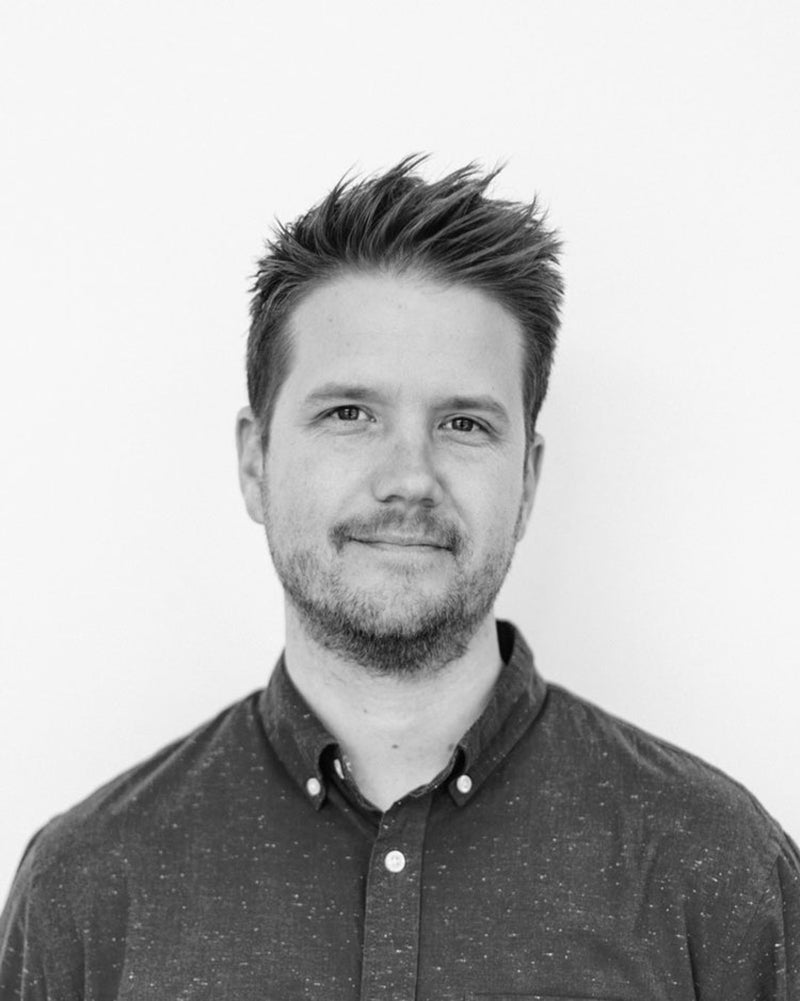 Teaching a Master of Architecture Track II studio (ARCH 484/584) in Portland, Clayton Taylor joins the Department of Architecture as a pro tem instructor. Taylor says his studio will examine office building typology and “radically transform its function and aesthetic for post-pandemic work culture.”
Teaching a Master of Architecture Track II studio (ARCH 484/584) in Portland, Clayton Taylor joins the Department of Architecture as a pro tem instructor. Taylor says his studio will examine office building typology and “radically transform its function and aesthetic for post-pandemic work culture.”
Taylor is a practicing architect, co-founder, and principal at West of West, an architecture and design studio in Portland. The studio focuses on medium to large scale design-forward projects that involve creating ground-up buildings, commercial interiors, and reuse of outdated structures. With on-going projects in Portland, Seattle, Austin, Oakland, and Los Angeles, Taylor brings an extensive breadth of knowledge about creating architecture in the modern American city.
“I’m very excited to work with UO students and gain fresh perspectives on critical topics that are currently shifting architectural practice in Portland,” Taylor said.
Daniel Toole
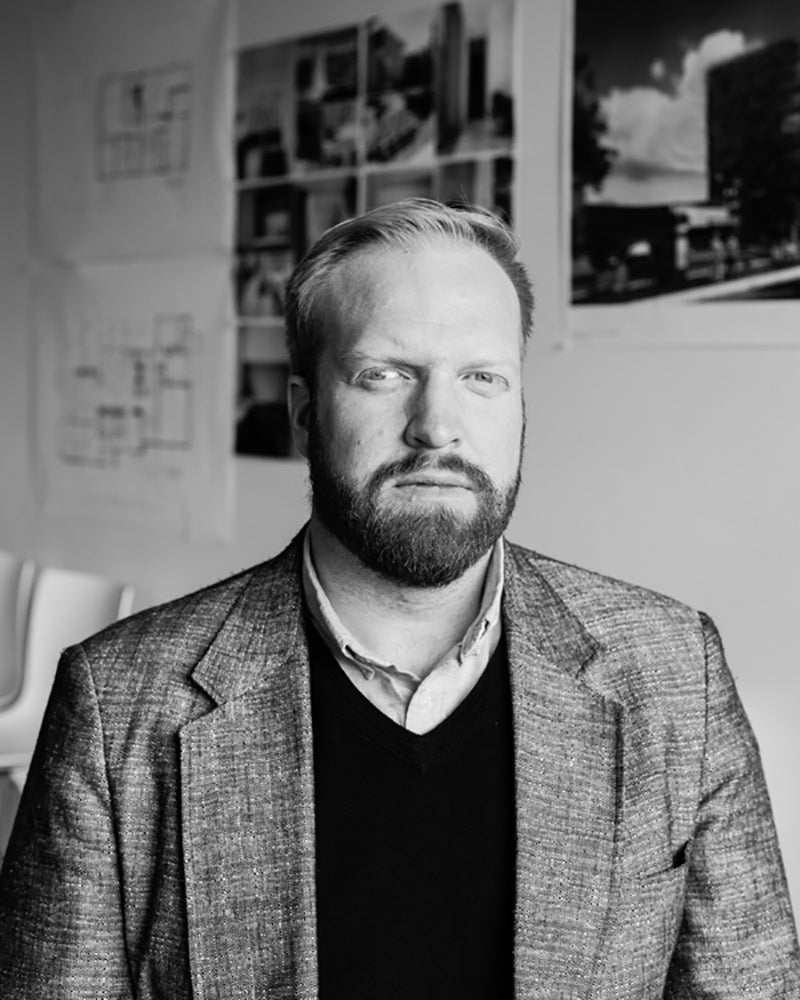 Daniel Toole joins the Department of Architecture as a pro tem instructor teaching a second-year studio focused on designing a community library in Northeast Portland.
Daniel Toole joins the Department of Architecture as a pro tem instructor teaching a second-year studio focused on designing a community library in Northeast Portland.
An alumnus himself, Toole received a bachelor of architecture degree from the UO in 2008 before he went on to complete a master of architecture in urban design from the Harvard Graduate School of Design.
He founded Daniel Toole Architecture in 2013 and has designed private residences, institutional and commercial buildings, landscapes, and master plans independently and with various internationally recognized offices including Rick Joy Architects, Barkow Leibinger Architects, Perkins + Will, and Allied Works Architecture. He published a book on his alleyway explorations, Tight Urbanism, in 2010.
“After receiving my BArch here in 2008, I am excited to return to the school after working and traveling around the world to bring back my experiences and invest that knowledge back into the next generation of designers going through the program,” Toole said.
School of Art + Design
Hiba Ali
 Digital artist, scholar, curator, and experimental music producer Hiba Ali joins the School of Art + Design as an assistant professor of art. She is teaching courses in art and technology.
Digital artist, scholar, curator, and experimental music producer Hiba Ali joins the School of Art + Design as an assistant professor of art. She is teaching courses in art and technology.
“I aim to bring scholarly excellence in the field of digital art and technologies,” Ali said. “In my fall courses, I plan to integrate different modalities regarding technology and different art, including, but not limited to, surveillance, obfuscation, and design justice.”
Ali’s work examines surveillance, womxn and womyn of color, and labor, as well as the geographies of Afro-descent and Indo-Arab communities across the Indian Ocean through music, cloth, and ritual. She is a PhD candidate in Cultural Studies at Queens University, Kingston, Canada.
